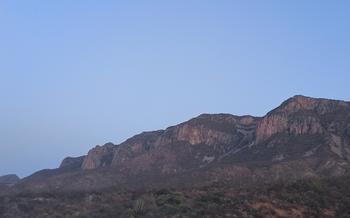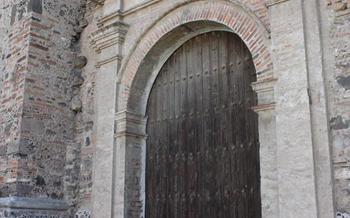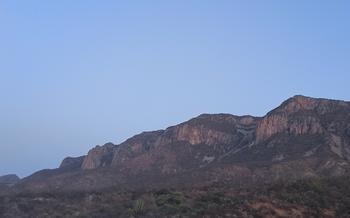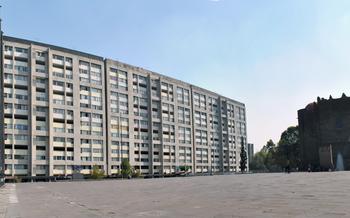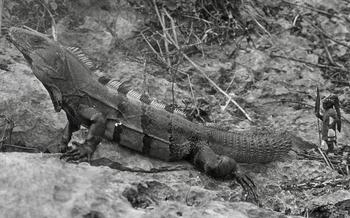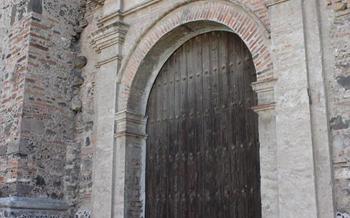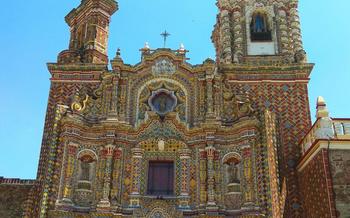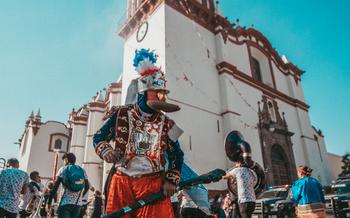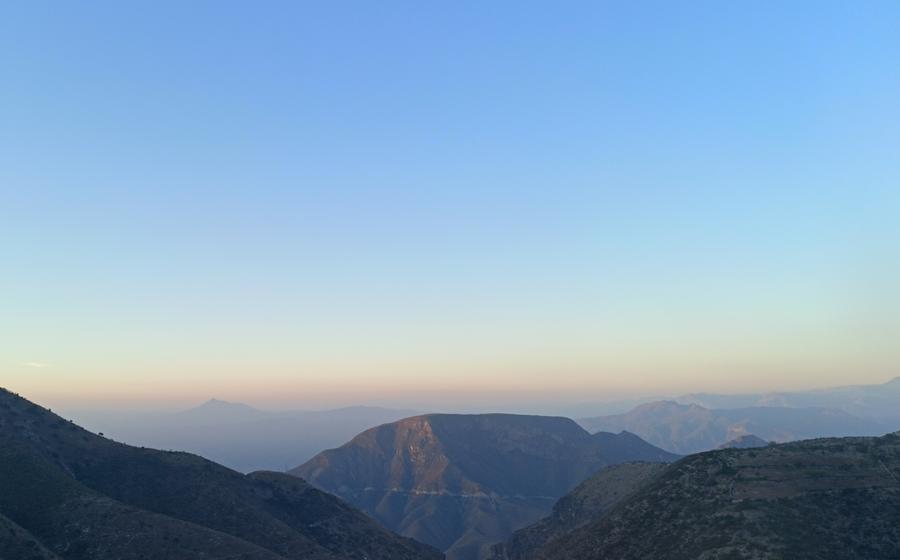
San Junípero Serra Historic Route
- Route Itinerary
- Mission Santa Maria De La Purisima Concepcion De Jalpan
- Museum of the Sierra Gorda
- The Magic River: A Natural Wonderland
- Visiting the Magic River: Practical Information
- Sierra Gorda Biosphere Reserve
- Queretaro City:
- Bernal: A Haven of Artisanry and Colonial Charm
- Insider Tip:
Route Itinerary
The San Junípero Serra Historic Route is a 210-mile (350-km) pilgrimage route that traces the footsteps of the 18th-century missionary Junípero Serra in Mexico. The route begins in Querétaro City and ends in San Francisco de Borja, passing through picturesque towns, colonial missions, and stunning natural landscapes along the way.
Key destinations on the route include the Mission San Francisco De Borja Adac, the Mission Santa Maria De La Purisima Concepcion De Jalpan, the Mission Santiago De Jalpan, and the Museum of the Sierra Gorda.
The route is typically completed in seven to ten days, allowing visitors to immerse themselves in the region's history, culture, and natural beauty. Suggested stops include the colonial towns of San Miguel De Conca and Tequisquiapan, the Magic River, and the Peña De Bernal, a monolithic rock formation that offers stunning views of the surrounding countryside.
An overall route map or guide can be obtained from tourist information centers in Querétaro City, San Francisco de Borja, or any of the towns along the way.
Mission Santa Maria De La Purisima Concepcion De Jalpan
The Mission of Santa Maria De La Purisima Concepcion De Jalpan, or mission's most striking characteristic is its intricate Churrigueresque facade, adorned with elaborate carvings and sculptures depicting biblical scenes and saints. The interior of the church is equally impressive, with a barrel-vaulted ceiling and walls covered in colorful murals depicting the life of Jesus and the Virgin Mary.
Jalpan Mission was founded in 1751 by Franciscan missionaries and played a crucial role in the evangelization of the region. It served as a center of religious, cultural, and economic activity, bringing together indigenous communities and Spanish settlers.
The mission is steeped in local legends and folklore. One popular tale tells of a hidden treasure buried beneath the mission, said to have been left behind by the Franciscans during the Mexican Revolution.
Visiting hours for the Jalpan Mission are from 9 am to 6 pm daily. Admission fees are minimal, and guided tours are available for a deeper understanding of the mission's history and architecture.
Museum of the Sierra Gorda
The Museum of the Sierra Gorda is a treasure trove of cultural and historical artifacts that narrate the captivating story of the region. Step inside this eclectic museum, and you'll be transported back in time, exploring the rich heritage of the Sierra Gorda.
Interactive displays and educational programs bring the region's history to life, allowing visitors to delve into the lives of the indigenous people, Spanish conquistadors, and missionaries who shaped this land. Temporary exhibitions and special events showcase the vibrant contemporary culture of the Sierra Gorda, ensuring that there's always something new to discover.
Marvel at the intricate textiles, pottery, and traditional costumes that showcase the artistic prowess of the region's artisans. Learn about the medicinal plants and traditional healing practices that have been passed down through generations. Immerse yourself in the fascinating stories of the people who have called the Sierra Gorda home, and gain a deeper appreciation for the diverse cultural tapestry that makes this region so unique.
Visiting Hours: Tuesday to Sunday, 10 am to 5 pm. Admission Fees: Adults: $50 pesos, Children: $25 pesos.
The Magic River: A Natural Wonderland
The Magic River, also known as Río Escondido (Hidden River), is a true gem of the Sierra Gorda region. This enchanting river winds its way through a stunning canyon, showcasing remarkable geological formations and breathtaking natural beauty. For those seeking adventure, the river offers opportunities for kayaking, swimming, and other water activities. Nature enthusiasts can embark on scenic hiking trails, immersing themselves in the diverse flora and fauna of the region.
The Magic River is a haven for outdoor enthusiasts, offering a range of activities to suit every preference. Whether you seek adrenaline-pumping adventures or tranquil moments amidst nature's wonders, the river has something for everyone. Take a leisurely swim in its crystal-clear waters, or embark on a thrilling kayak excursion, navigating through narrow passages and around towering rock formations.
For those who prefer to stay on land, the surrounding trails offer a chance to explore the region's diverse ecosystems. Hike through lush forests, ascend to scenic viewpoints, and discover hidden waterfalls. Keep an eye out for the abundant wildlife, including colorful birds, playful monkeys, and elusive reptiles.
Visiting the Magic River: Practical Information
To make the most of your visit to the Magic River, consider these practical tips:
- Visiting hours: The river is accessible year-round, but the best time to visit is during the dry season (October to May), when the water levels are lower, allowing for easier navigation.
- Admission fees: There is no entrance fee for visiting the river, but some activities, such as kayak rentals, may incur a charge.
- Getting there: The river is located within the Sierra Gorda Biosphere Reserve, approximately 2 hours from the city of Querétaro. To reach the river, take Highway 120 towards Jalpan, then follow the signs to Río Escondido.
Whether you're seeking adventure, relaxation, or a chance to connect with nature, the Magic River promises an unforgettable experience, leaving you enchanted by its beauty and magic.
Sierra Gorda Biosphere Reserve
The Sierra Gorda Biosphere Reserve, a UNESCO World Heritage Site, is a testament to the region's rich biodiversity and natural splendor. Encompassing over 383,000 hectares, the reserve boasts a diverse array of ecosystems, including cloud forests, temperate forests, arid grasslands, and tropical rainforests. It is home to an incredible variety of flora and fauna, including over 1,000 plant species and 300 animal species, many of which are endemic to the region.
The reserve is a haven for wildlife enthusiasts, offering opportunities for spotting a wide range of animals, including jaguars, ocelots, margays, howler monkeys, spider monkeys, and a variety of bird species. Visitors can embark on guided hikes, birdwatching tours, and wildlife safaris to explore the reserve's diverse ecosystems and encounter its fascinating inhabitants.
Beyond its natural wonders, the Sierra Gorda Biosphere Reserve is also home to several indigenous communities, each with its own unique traditions and cultures. Visitors can interact with these communities, learn about their way of life, and support their conservation efforts.
The reserve is committed to sustainable practices and conservation initiatives, working to protect the region's fragile ecosystems and ensure its long-term preservation. Visitors are encouraged to adopt responsible tourism practices, such as staying on designated trails, respecting wildlife, and supporting local conservation efforts.
Queretaro City:
Queretaro City, the capital of the state of Queretaro, is a vibrant and historic city that offers a wealth of attractions for visitors. The city's historical center is a UNESCO World Heritage Site, and its colonial architecture, cobblestone streets, and lively plazas create a charming and inviting atmosphere.
Queretaro City is also home to a thriving culinary scene, with a variety of restaurants serving up traditional Mexican cuisine as well as international fare. The city's vibrant nightlife scene features a mix of bars, clubs, and live music venues, ensuring that there is something for everyone to enjoy.
Must-See Locations:
-
Plaza de Armas: The main square of Queretaro City, surrounded by historic buildings, cafes, and shops.
-
Queretaro Cathedral: A stunning example of 18th-century baroque architecture, featuring intricate carvings and a beautiful interior.
-
Museo Regional de Queretaro: A museum showcasing the history and culture of Queretaro, with exhibits on archaeology, art, and more.
-
Teatro de la República: A historic theater that hosted the signing of the Mexican Constitution in 191
-
Acueducto de Queretaro: An iconic 18th-century aqueduct that spans over 9 kilometers and is a symbol of the city.
Visiting Hours and Admission Fees:
Visiting hours and admission fees for attractions in Queretaro City vary depending on the specific location. It's recommended to check the official websites or contact the individual attractions for more information.
Bernal: A Haven of Artisanry and Colonial Charm
Nestled in the heart of the Sierra Gorda, Bernal emanates timeless charm, with its cobblestone streets, colonial architecture, and vibrant artisanal traditions. Stroll through the town square, admiring the intricate details of the Parroquia de San Sebastián, a testament to Baroque grandeur.
Immerse yourself in the local culture by visiting the bustling markets, where vendors showcase their handcrafted wares, from intricate textiles to colorful pottery. Discover unique souvenirs, such as the iconic "muñecas artesanales," handmade dolls adorned with traditional costumes, or intricate woven baskets that reflect the town's rich artisanal heritage.
Indulge in the flavors of Bernal's delectable cuisine, savoring traditional dishes like "enchiladas serranas" or "carnitas," slow-cooked pork that melts in your mouth. Don't miss the opportunity to sample local spirits, including the renowned "pulque," a fermented beverage made from the sap of the maguey plant.
As the sun dips below the horizon, the town transforms into a vibrant hub of activity. Join the locals in the lively plazas, where mariachi bands serenade passersby, and street performers showcase their talents. Experience the infectious energy of Bernal's nightlife, where bars and restaurants come alive with music, laughter, and dancing.
Insider Tip:
The ideal time to visit the San Junípero Serra Historic Route is during the dry season, from October to May, when the weather is pleasant and sunny. To immerse yourself in the local culture, make sure to attend traditional festivals like the "Feria de las Flores" in Jalpan or the "Festival del Queso y el Vino" in Tequisquiapan. Accommodation options range from charming haciendas to cozy guesthouses, and transportation is readily available, with car rentals and buses connecting the major destinations. Safety is a priority, so always be mindful of your surroundings and take necessary precautions. Embrace the local customs and etiquette by greeting people warmly, learning a few Spanish phrases, and respecting local traditions. Indulge in the regional cuisine, known for its delicious barbacoa, enchiladas queretanas, and refreshing pulque. With these insider tips, you'll have an enriching and unforgettable experience along the San Junípero Serra Historic Route.
